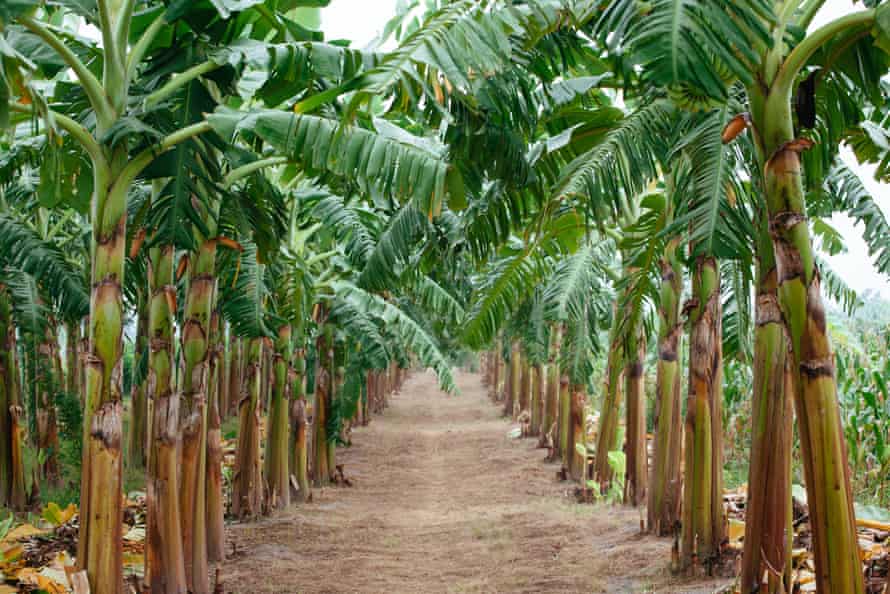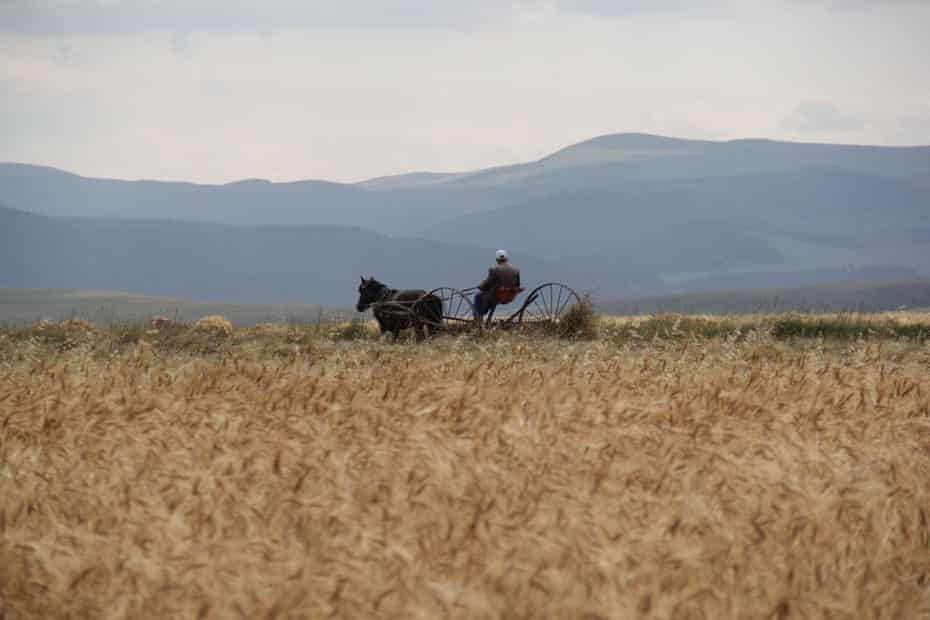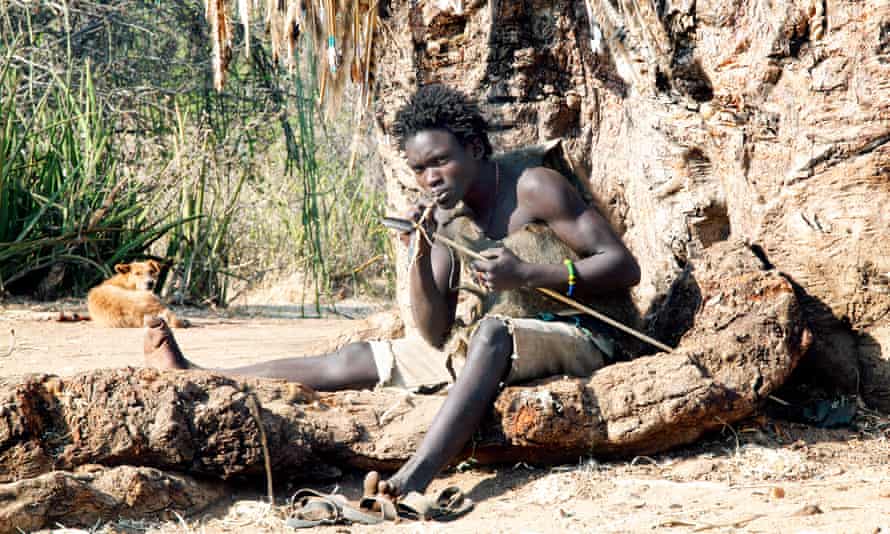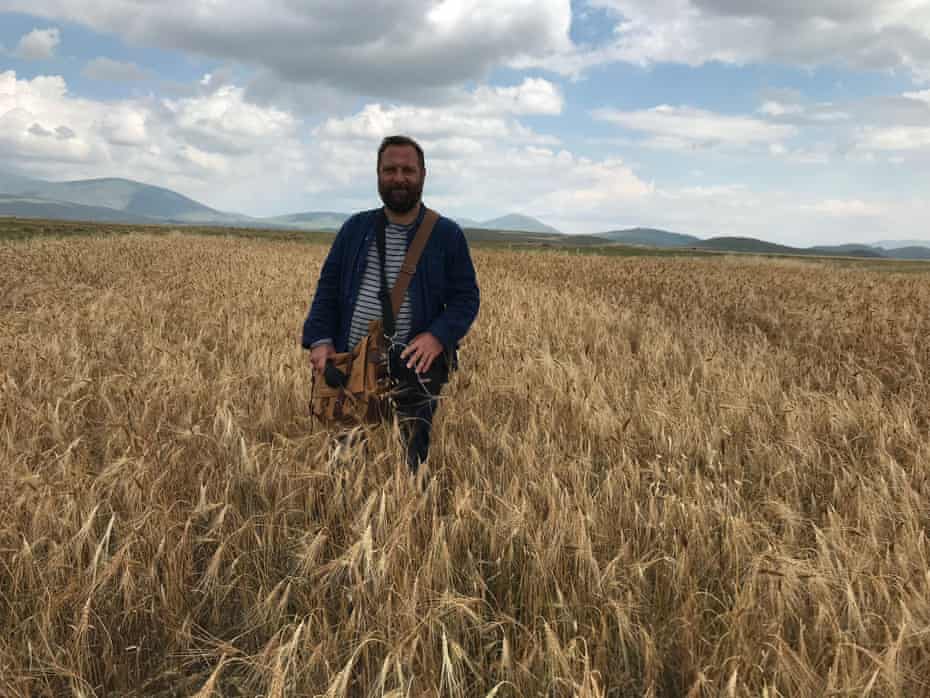Are we eating ourselves to extinction?

It’s not just animals that are at risk of dying out, the world’s crops are in rapid decline. Here’s why it matters what is on your plate
In eastern Turkey, in a golden field overshadowed by grey mountains, I reached out and touched an endangered species. Its ancestors had evolved over millions of years and migrated here long ago. It had been indispensable to life in the villages across this plateau, but its time was running out. “Just a few fields left,” the farmer said. “Extinction will come easily.” This endangered species wasn’t a rare bird or an elusive wild animal, it was food, a type of wheat: a less familiar character in the extinction story now playing out around the world, but one we all need to know.
To most of us, one field of wheat might look much like any other, but this crop was extraordinary. Kavilca (pronounced Kav-all-jah) had turned eastern Anatolian landscapes the colour of honey for 400 generations (about 10,000 years). It was one of the world’s earliest cultivated foods, and is now one of the rarest.

How can a food be close to extinction and yet at the same time appear to be everywhere? The answer is that one type of wheat is different from another, and many varieties are at risk, including ones with important characteristics we need to combat crop diseases or climate change. Kavilca’s rarity is emblematic of the mass extinction taking place in our food.
Many aspects of our lives are becoming more homogeneous. We can shop from identical outlets, see the same brands and buy into the same fashions around the world. The same is true of our diet. In a short space of time it has become possible for us to eat the same food wherever we are, creating an edible form of uniformity. “But hang on,” you might say, “I eat a greater variety of foods than my parents or grandparents ever did.” And on one level, that is true. Whether you’re in London, Los Angeles or Lima, you can eat sushi, curry, or McDonald’s; bite into an avocado, banana or mango; sip a Coca-Cola, a Budweiser or a branded bottle of water. What we’re being offered appears at first to be diverse, until you realise it is the same kind of “diversity” that is spreading around the globe in identical fashion.
Consider these facts: the source of much of the world’s food – seeds – is mostly in the control of just four corporations; half of all the world’s cheeses are produced with bacteria or enzymes manufactured by a single company; one in four beers drunk around the world is the product of one brewer; from the US to China, most global pork production is based around the genetics of a single breed of pig; and, perhaps most famously, although there are more than 1,500 different varieties of banana, global trade is dominated by just one, the Cavendish.
This level of uniformity has never been experienced before. The human diet has undergone more change in the last 150 years (roughly six generations) than in the entire previous one million years (around 40,000 generations). We are living and eating our way through one big unparalleled experiment.
For most of our evolution as a species, as hunter-gatherers and then as farmers, human diets were enormously varied. Our food was the product of a place and crops were adapted to a particular environment, shaped by the knowledge and the preferences of the people who lived there as well as the climate, soil, water and even altitude. This diversity was stored and passed on in the seeds farmers saved, in the flavours of the fruits and vegetables people grew, the breeds of animals they reared, the bread they baked, the cheeses they produced and the drinks they made.
Kavilca wheat is one of the survivors of disappearing diversity, but only just. It has a distinctive history and a connection to a specific part of the world and its people. It is only during our lifetimes that this singular grain, perfectly adapted to its environment and with a taste like no other, has become endangered and pushed to the brink of extinction. The same is true of many thousands of other crops and foods. We should all know their stories and the reasons for their decline, because our survival depends on it.

My entry into food journalism took place during a crisis. It was 2008, and while the world was mostly focusing on the financial turmoil ripping through the banking system, a momentous food story was also unfolding. Wheat, rice and maize prices were spiralling to record highs, tripling on global markets at their peak. This pushed tens of millions of the poorest people on Earth towards hunger and also fuelled the tensions that later exploded into the Arab spring. Riots and protests toppled governments in Tunisia and Egypt and helped trigger the conflict in Syria. For the first time in decades, people were asking serious questions about the future of our food. With 7.5 billion people on Earth and a projected 10 billion by 2050, crop scientists began telling the world that global harvests needed to increase by 70%. Calling for greater diversity seemed liked an indulgence. But now we’re starting to realise that diversity is essential for our future.
Evidence of this shift in thinking came in September 2019 at the climate action summit held at the United Nations headquarters in New York. Emmanuel Faber, then CEO of the dairy giant Danone, told the business leaders and politicians present that the food system the world had created over the last century was at a dead end. “We thought with science we could change the cycle of life and its rules,” he said, that we could feed ourselves with monocultures and base most of the world’s food supply on a handful of plants. This approach was now bankrupt, Faber explained. “We’ve been killing life and now we need to restore it.”
Faber was making a pledge to save diversity backed by 20 global food businesses, including Unilever, Nestle, Mars and Kellogg’s – companies with combined annual food sales in 100 countries of about $500bn. At the event, Faber expressed concern that in parts of the dairy industry 99% of the cows are a single breed, the Holstein. “It’s oversimplistic now,” he said of the global food system. “We have a complete loss of diversity.”

If the businesses that helped create and spread homogeneity in our food are now voicing concerns over lost diversity, then we should all take notice. The enormity of what we’re losing is only now dawning on us, but if we act now, we can save it.
The decline in the diversity of our food, and the fact that so many foods have become endangered, didn’t happen by accident: it is an entirely human-made problem. The biggest loss of crop diversity came in the decades that followed the second world war when, in an attempt to save millions from starvation, crop scientists found ways to produce grains such as rice and wheat on a phenomenal scale. To grow the extra food the world desperately needed, thousands of traditional varieties were replaced by a small number of new super-productive ones. The strategy that ensured this – more agrochemicals, more irrigation, plus new genetics – came to be known as the “green revolution”.

Because of it, grain production tripled, and between 1970 and 2020 the human population more than doubled. But the danger of creating more uniform crops is that they become vulnerable to catastrophes. A global food system that depends on just a narrow selection of plants is at greater risk of succumbing to diseases, pests and climate extremes.
Although the green revolution was based on ingenious science, it attempted to oversimplify nature, and this is starting to backfire on us. In creating fields of identical wheat, we abandoned thousands of highly adapted and resilient varieties. Far too often their valuable traits were lost. We’re starting to see our mistake – there was wisdom in what went before.
Of the 6,000 plant species humans have eaten over time, the world now mostly eats just nine, of which just three – rice, wheat and maize – provide 50% of all calories. Add potato, barley, palm oil, soy and sugar (beet and cane) and you have 75% of all the calories that fuel our species. As thousands of foods have become endangered and extinct, a small number have risen to dominance. Take soy, domesticated in China thousands of years ago, a bean relatively obscure outside Asia until the 1970s and now one of the world’s most traded agricultural commodities. Used in feed for pigs, chickens, cattle and farmed fish, which in turn feed us, soy plays a starring role in an increasingly homogeneous diet eaten by billions of people. These dietary shifts taking place at a global level, all pointing towards uniformity, are unprecedented.
An individual human diet even a few thousand years ago was far richer in diversity than the one most of us eat today. In the Jutland peninsula of western Denmark in 1950, peat diggers discovered the intact body of a man who had been executed (or possibly sacrificed) 2,500 years ago. Inside the man’s stomach was a porridge made with barley, flax and the seeds of 40 different plants. In present-day east Africa, the Hadza, who are among the last of the world’s hunter-gatherers, eat from a potential wild menu that consists of more than 800 plant and animal species, including numerous types of tubers, berries, leaves, small mammals, large game, birds and types of honey. We can’t replicate their diets in the industrialised world but we can learn from them.
I am not calling for a return to some kind of halcyon past. But I do think we should consider what the past can teach us about how to inhabit the world now and in the future. Our current food system is contributing to the destruction of the planet: one million plant and animal species are now threatened with extinction; we clear swathes of forests to plant immense monocultures and then burn through millions of barrels of oil a day to make fertilisers to feed them. We are farming on borrowed time.

I can’t claim saving endangered foods will provide answers to all of these problems, but I believe it should be part of the solution. Kavilca wheat, for example, can thrive in conditions so cold and damp that modern crops are guaranteed to fail. Bere barley is a food so perfectly adapted to the harsh environment of Orkney that no fertilisers or other chemicals are needed for it to grow. And murnong, a juicy, nutritious and once abundant root from southern Australia, is proof that the world has much to learn from indigenous peoples about eating more in harmony with nature.
The concept of being endangered and at risk of extinction is usually reserved for wildlife. Since the 1960s, the red list, compiled by the International Union for Conservation of Nature, has catalogued vulnerable plant and animal species (about 105,000 at the time of writing), highlighting those at risk of extinction (nearly 30,000).
A version of the red list dedicated solely to food was created in the mid-1990s by Italy’s Slow Food movement and named the Ark of Taste. The group that created it saw that when a food, a local product or crop became endangered, so too did a way of life, knowledge and skill, a local economy and an ecosystem. Their call to respect diversity captured the imaginations of farmers, cooks and campaigners from around the world, who started to add their own endangered foods to the Ark.
As I write, the Ark of Taste contains 5,312 foods from 130 countries, with 762 products on a waiting list ready to be assessed. I have met many people saving endangered foods, including the farmer who showed me the rare field of Kavilca wheat. There are likely to be other champions in your own part of the world. You can help, too, by finding the foods that are endangered in your area, whether an apple variety or a local cheese. By eating these, you can help to save them. Such foods represent much more than sustenance. They are history, identity, pleasure, culture, geography, genetics, science, creativity and craft. And our future.
This is an edited extract from Eating to Extinction by Dan Saladino, to be published by Jonathan Cape on 23 September.